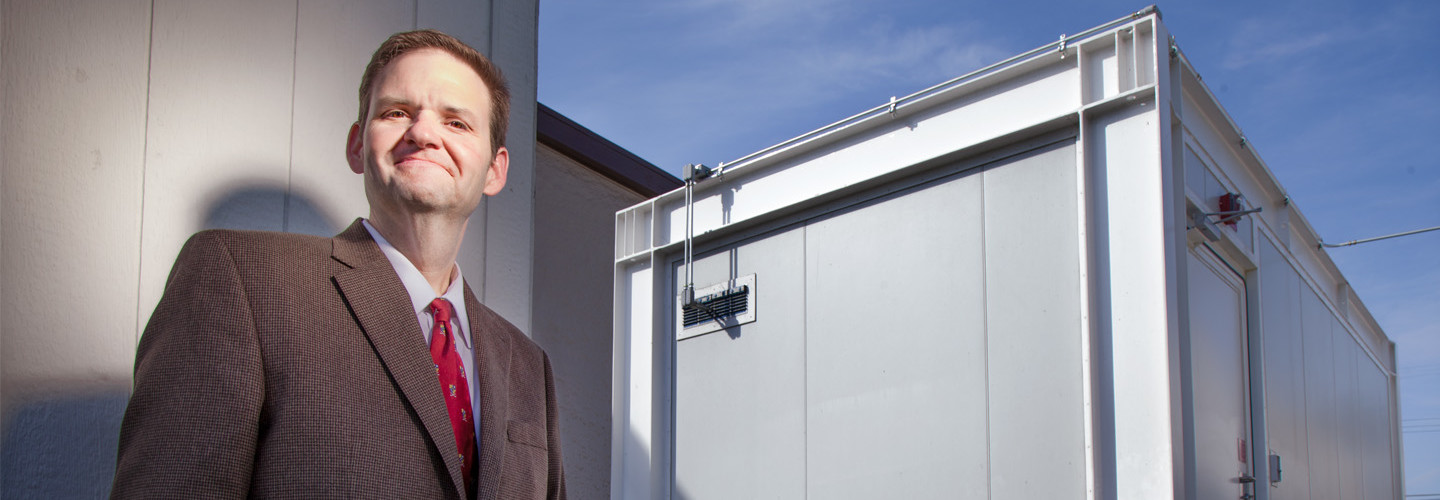How a Modular Data Center Adds Flexibility, IT Capacity to K–12 Districts
Until last spring, Tulare City School District in California powered its IT systems with what Daryl Shelton calls a “makeshift” data center. The facility was an old converted classroom, and it lacked proper wiring and cooling systems, leading to fears of downtime and damage to equipment.
“We couldn’t rely on the data center,” says Shelton, director of information services for the district. “If the power went out or if the circuit breaker blew, we only had so much runtime, and we had to shut the computers off.”
Downtime, once expected in K–12 education, is now seen as an intolerable disruption, as teaching and learning move increasingly onto computers.
“We know that the classroom is going to depend on IT being up all the time and IT services working,” Shelton says. “We can’t have downtime and expect students to have their educational day go smoothly.”
Shelton wanted a state-of-the art solution that could guarantee 99.9 percent uptime for district computing resources. But building a new data center would be costly, and it would require the district to go through time-intensive and laborious construction-approval procedures. Enter the APC Modular Data Center — a “data center in a box” that looks something like a shipping container or a portable storage unit. Until now, these solutions have largely been used in hospital and military settings, but pioneers such as Tulare are bringing them into education.
The unit, 25 feet long and 11.5 feet wide, sits on a 6-inch concrete slab outdoors and provides a dust-free, earthquake-proof and fireproof house for the district’s IT resources. “The APC solution offered all of the things we needed to support our IT equipment properly,” Shelton says. “We’ve gone from regular servers and routers to more sophisticated virtual servers, and we now have the proper cooling, lighting, fire suppression and power loads.”
‘Modular Can Be A Better Solution’
Kelly Quinn, research manager for the Datacenter Trends and Strategies group within IDC, says that modular data centers have a number of benefits for K–12 schools, even if they have yet to catch on in the sector.
Many schools’ data centers, Quinn says, are currently very “MacGyver-esque” — held together with duct tape and requiring constant care and maintenance. While the upfront cost of upgrading to a modular data center may be prohibitive for some school districts, she says the move can actually save organizations money in the long run.
“Sometimes, it can seem that there’s a price premium on modular, but you get what you pay for,” Quinn says. “When you look at the total cost to deploy the unit — including staff time, installation, patch-up and the configuration of servers — modular can be a better solution.” Improved IT services and a quick rollout also are benefits of modular solutions, she adds.
Quinn says some organizations balk at modular units because managers worry that the reduced maintenance needs will lead to staff cuts. That’s unlikely to be an issue for schools that are already operating with small crews and thin budgets, she says. “K–12 is already pretty much strapped.”
Modular Data Centers Are Easily Expanded
The Blue Springs R-IV School District in Missouri is another district that has enhanced its data center capabilities without expanding its physical footprint. Blue Springs used the Nutanix Virtual Computing Platform to compress 88 servers at 22 buildings into four nodes in a centralized location.
The Nutanix solution is also modular, in a sense — not containerized, but rather made up of standardized units that can easily be expanded. In fact, the district already has added a fifth node.
Technology Director Tim Jones says that the 88 scattered servers were holdovers from a time when connection speeds within the district were lower. Now that the district has a 10 Gigabit Ethernet connection between buildings, Jones says, it made more sense to centralize those computing resources.
“We’re a pretty small staff,” Jones says. “The way it was handled before, when all the servers were out in the buildings, the techs would just manage the servers and make sure they were up and running well. Now it’s all back here at our central office building. We just have one tech to make sure it’s up and running. That helps free up the rest of them to focus on the end users.”
The easily expandable design of the Nutanix solution is a big plus, Jones says. “You can continue to scale based on your needs.”
Similarly, Shelton says that the modular unit in Tulare has plenty of room to allow the district to grow.
“We have a good deal of capacity still available to us — nearly two and a half racks of empty capacity,” he says. “I can’t see us using that in the next 10 or 15 years. The best part of the modular system is that it fits our needs now and into the future.”








